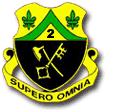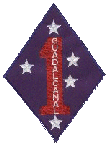Bart_Breedyk
Posts: 83
Joined: 5/2/2002
From: Ottawa
Status: offline

|
OK, I had pretty much finished this post and decided to put up a quick disclaimer at the beginning. As you read this, please bear in mind that I am NOT a military man nor anything more than an amateur Historian with an interest in the Pacific Theatre. As such, these are my opinions, and since I wrote this entirely from memory without access to the few books I have on the subject, some of my 'facts' may very well be in error. Please feel free to comment on what I have written here, I just ask you refrain from flaming me, as I will not respond to these kinds of messages at all. I AM interested in your views on this subject, let's please just agree to keep it civil. There, now that I have that off my chest, please continue! :)
As much as I am anticipating the impending arrival of Uncommon Valor in my mailbox, it will merely whet my appetite for War in the Pacific. I very much look forward to trying out different strategies on both sides to see if they will make any signficant difference on the war's outcome. The best weapons the Americans had were their factories, but what would have been the impact of streamlining some of their production? Now, alot of my decisions which follow have the benefit of nearly 60 years of hindsight, but then what the hell, this IS a game after all.
Some of the production oriented things I would like to try are;
1) Scrap Torpedo bomber squadrons completely! Convert all of these aircrew to divebombers (specifically Dauntlesses), likewise do away with torpedo bomber production in lieu of Dauntless production. Now, understand I don't have anything against the Avenger, an excellent aircraft from what I've read, but it seems to me that the divebomber squadrons did far more damage in the war than any of the torpedo bombers did. OK, there's Pearl Harbour, Taranto, and the Bismarck to name a few, but I feel that these are exceptions. The first two were agains large, stationary targets at anchor in harbours, and the last was a lucky hit that jammed the rudder, but HOW many vessels of all nations were sunk by dive bombers? Too many to name. So, in order to keep production and logistics to a minimum, do away with torpedo bomber squadrons completely and concentrate on a more effective platform, the dive bomber.
2) Commit to only one aircraft design per type, as follows;
Heavy Bomber: B24 for it's better bomb load (I believe) and range over the B17
Medium Bomber: The B25 just for it's incredible versatility, mounted everything from bombs and rockets, to bunches of .50 calibre MG's and even a 75mm cannon!
Naval Fighter: Probably the Hellcat, although my heart is with the Corsair. There really isn't alot of differences between the two, but the F6F was in production for quite ahwile before the Corsair.
Naval Bomber: Well, see above.
Land based Fighter: The P38, although the P51 is more maneuverable, an extra engine is alot of comfort when flying over vast areas of the Pacific Ocean. Hmmm, maybe the Corsair could fit into this role.
3) Naval vessel construction;
The most important vessel in the theatre could, arguably, be the merchant vessel. Without supplies, the best men and the best war machines are completely useless, and to that end I would make sure a steady supply of these workhorses left the shipyards.
The second vessel I would concentrate on would be the fleet submarine. Ton for ton the submarines were the most capable naval unit of the war and if the US were to produce as many as she could, the waters around the Japanese home islands would become a very dangerous place.
In order to free up manufacturing and supply resources for the merchies and the subs, I would probably scrap, or at least severly curtail, Battleship production. Each one of these big old boys would free up a lot of steel for other projects that would bear fruit much quicker than the battlewagons.
Lastly, but CERTAINLY NOT the least important, the Carriers. The Second world war was the 'coming out' party for the carrier, and the US certainly mastered this new naval power. Here I believe I would sacrifice Escort and Jeep carriers in favour of fleet carriers. The primary job of a carrier is to carry, fuel, and arm aircraft and no ship did this better than the US Fleet carrier. I realize the escort carriers had their role to fulfill, especially with convoy escort duties, but I wonder if their job could have been fulfilled just as, or more, easily by fleet carriers, once US production got up to full steam. I have to admit that it does seem a bit of a waste, though.
Destroyer and cruiser production I would probably not touch at all, except for maybe sticking with one design per class. I certainly don't want any of those nice, shiny new Essex class carriers steaming out of port without a sizable destroyer escort!
Army and Marine production I would not touch at all, except maybe to concentrate on the Marines a bit more, specifically making sure they had plenty of landing craft to fulfill whatever tasking comes their way.
In the end, I guess you could say that I believe that the US 'out produced' Japan, I'm just interested to see if the war could have been shortened abit with the few tweaks I mention here.
As always, comments are most welcome.
Bart
|
 Printable Version
Printable Version













 New Messages
New Messages No New Messages
No New Messages Hot Topic w/ New Messages
Hot Topic w/ New Messages Hot Topic w/o New Messages
Hot Topic w/o New Messages Locked w/ New Messages
Locked w/ New Messages Locked w/o New Messages
Locked w/o New Messages Post New Thread
Post New Thread